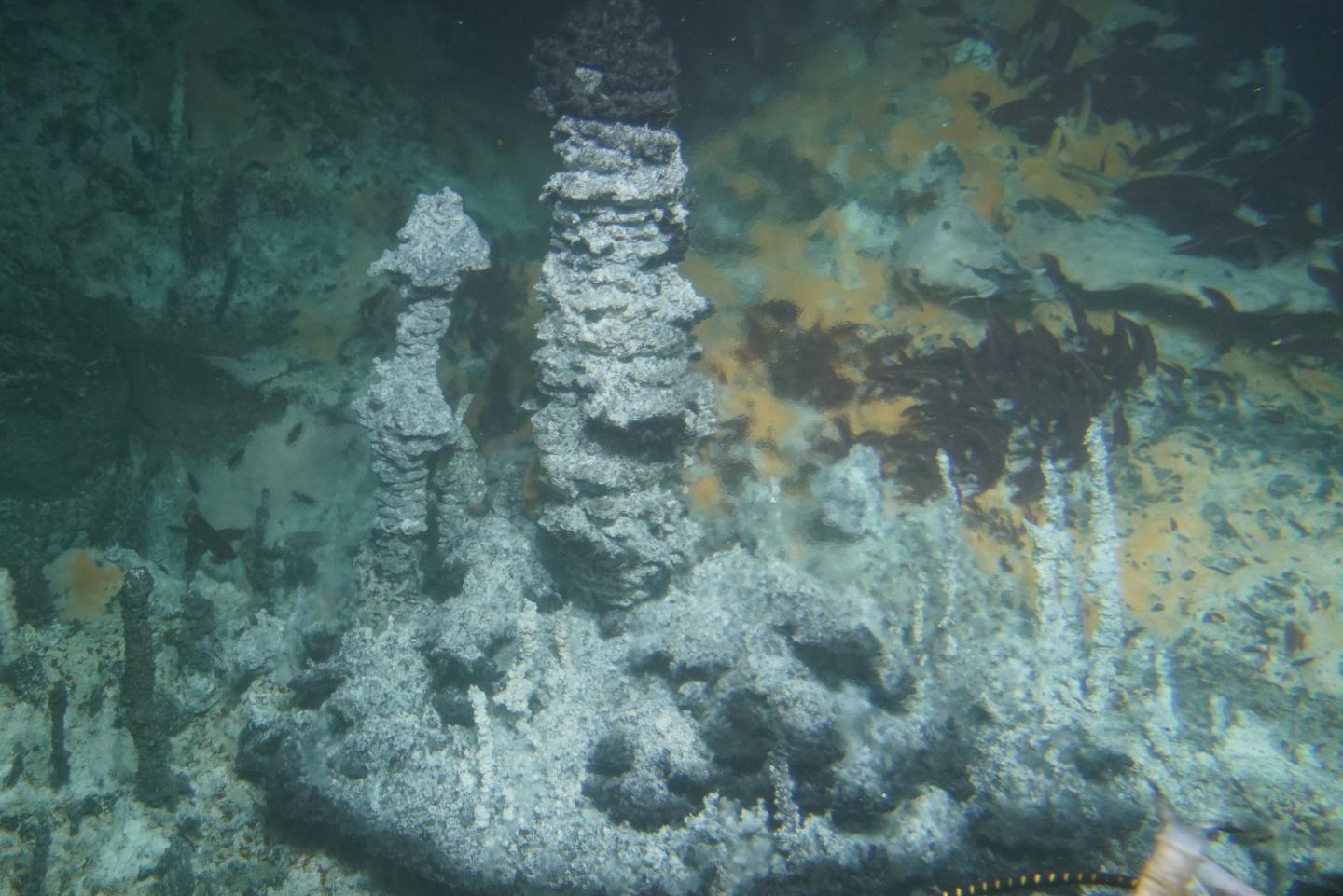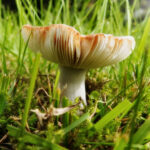Carbon Isotope Anomaly in the Deep Sea
Carbon variations in methane found on the ocean floor are giving researchers new insights into ocean microbes and chemical reactions.
By Crystal Wang
The greenhouse gas methane provides fuel for anaerobically methane-oxidizing archaea (ANME), a type of microorganism located at the bottom of the sea. ANME are responsible for the anaerobic oxidation of methane (AOM). This is an important process because it is involved in the carbon cycle, which regulates carbon dioxide in the atmosphere. Researchers studied isotopic fractionation to track the redox reaction, and they revealed an interesting discovery: AOM by archaea depletes isotope carbon-13 rather than the lighter carbon-12, countering usual trends. Researchers discovered that the level of sulfate in the environment was the factor that dictated which isotope was primarily consumed by the archaea. When ANME cultures were tested in conditions in which sulfate levels were low, it was found that carbon-13 was preferably consumed. The thermodynamics and reversibility of the chemical reactions involved in both methanogenesis (the formation of methane by microbes) and AOM caused this anomaly (Wegener et al., 2021).
RELATED: Methane-Munching Microbes Limit Global Warming
The importance of methane and the carbon cycle
The greenhouse gas methane serves as an important fuel for ANME microorganisms at the bottom of the sea across the globe. Anaerobic oxidation of methane (AOM) occurs in sulfate-methane interfaces, in which sulfate diffusing from above meets methane rising from below. The cultured thermophilic (heat loving) ANME work in tandem with the partner bacterium Candidatus Desulfofervidus auxilii to complete the essential oxidation reduction reaction between methane and sulfate in these “transition zones.” This process is part of the carbon cycle, which helps regulate the earth’s climate. Fluctuations in this cycle have been suspected to result in an increase in atmospheric carbon dioxide, contributing to the detrimental greenhouse effect (Sarmiento, 1993). Researchers Gunter Wegener of the Max Planck Institute for Marine Microbiology in Germany, Jonathan Gropp of the Weizmann Institute of Science in Israel, and their colleagues conducted research to learn more about the role that these essential archaea have on the oxidation of methane and, in turn, the carbon cycle.
RELATED: Abundant Life Found on Deep Sea Mountains
Isotopic fractionation
Through studying the isotopes of carbon present in methane (chemical formula CH4) on the seafloor, researchers were able to study the progress of the AOM reaction. The oxidation of methane on the seafloor is a slow process and is therefore difficult to observe without special methods. By observing isotopic fractionation in the methane samples, the researchers were able to learn more about the redox reaction.
Isotopes of an element have the same number of protons but a different number of neutrons. While they have the same atomic number, they differ in their mass number. The two isotopes studied in this experiment were carbon-12, carbon with a mass number of 12, and carbon-13, carbon with a mass number of 13. Carbon-13 is the heavier isotope since it contains one more neutron than carbon-12. Although the chemical properties of the two carbon isotopes are identical, the differences in their masses affect the reaction rate of methane. Light methane contains the lighter carbon isotope C12 while heavy methane contains the heavier isotope C13.
In a mixture of light and heavy isotopes, lighter isotopes usually react faster, leaving the heavier isotope behind. Therefore, over time, isotopic composition of the reactant changes. This phenomenon is known as isotopic fractionation and has been observed for decades to track the progress of chemical reactions. Based on expected trends, one would expect carbon-12 to be the isotope that is primarily consumed in the oxidation of methane by seafloor microbes. Since it was predicted that the lighter isotope in the isotopic mixture would be consumed more quickly by the ANME, researchers expected that over time the methane found on the seafloor would consist primarily of carbon-13 methane. However, the opposite was observed, leading to confusion about the action of the microbes in the redox reaction studied (Wegener et al., 2021).
The role of sulfate levels in isotopic ratios
Upon further experimentation, researchers eventually concluded that the level of sulfate in the environment was the factor that dictated which isotope was primarily consumed by the archaea. In the lab, ANME cultures were used in order to determine whether the archaea were producing rather than consuming methane on the seafloor. Researchers discovered that in high sulfate concentrations normally found in seawater, the ANME consumed the lighter carbon isotope at a faster rate than the heavier carbon isotope. However, if the ANME cultures were tested in conditions in which sulfate levels were low, the resulting methane was enriched with carbon-12. This phenomenon occurred even though methane was still consumed by the ANME. Based off of these findings, Wegener and colleagues concluded that the ANME reside alongside sulfate-reducing microbes in zones where sulfate levels are low (Wegener et al., 2021).
Sulfate and intracellular reaction reversibility
The reason that sulfate levels impact the isotopic ratios in the oxidation of methane is due to the thermodynamics of the chemical reactions involved in methanogenesis and anaerobic oxidation of methane (AOM). Both methanogenesis and AOM involve a similar series of reactions. The reversibility of these reactions contributes to the observed isotopic fractionation results. It was discovered that the redox half reactions involved in AOM can be reversed to different extents based on how much sulfate is available. Low sulfate levels can lead to heavy isotopes that are stuck in the reaction chain and light isotopes that are channeled back into the methane, explaining the observed predominance of light methane. Overall, it is possible to explain the sulfate dependence of the isotopic fractionation in methane through taking a closer look at the chemical reactions involved in methanogenesis and AOM.
In conclusion
Using a biochemical-isotopic model, Wegener and associates were able to explain the sulfate dependence of the isotopic fractionation of carbon in methane on the seafloor. Their findings relate these isotopic patterns to the physiology and environment of the ANME. The fact that the results of this reaction differs from expected trends shows that there is much more to learn about the processing of methane on the seafloor by ANME and partner microbes. Since the processing of methane on the ocean floor is directly related to the carbon cycle, the redox reaction that occurs between methane and sulfate on the seafloor is an enigma that is worthy of more study.
This study was published in the peer-reviewed journal Science Advances.
References
Sarmiento, J. L. (1993). Ocean carbon cycle. Chemical and Engineering News, 71(22), 30–43. https://doi.org/10.1021/cen-v071n022.p030
Wegener, G., Gropp, J., Taubner, H., Halevy, I., & Elvert, M. (2021). Sulfate-dependent reversibility of intracellular reactions explains the opposing isotope effects in the anaerobic oxidation of methane. Science Advances, 7(19), eabe4939. https://doi.org/10.1126/sciadv.abe4939
Featured image: The Guaymas Basin hydrothermal vents – the “home” of the studied methane-oxidizing microorganisms. The heat loving microorganisms thrive under the orange microbial mat in the background. The high temperatures of the rising waters blur parts of the image. (Courtesy of the Woods Hole Oceanographic Institution)






